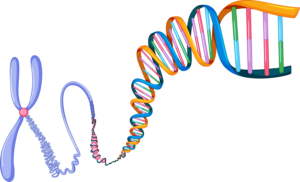Demystifying the Creation Process of Biopharmaceuticals
Ever wondered how life-changing treatments such as vaccines, insulin, and gene therapies are created?
In this blog post, we provide a simplified overview of the intricate process behind harnessing the power of proteins and DNA to revolutionize healthcare – the process of making Biopharmaceuticals.
Biopharmaceuticals are medicines made from living organisms or their components, such as proteins or DNA. The process of creating biopharmaceuticals involves several steps. Here’s a simplified explanation of the process:

1. Discovery and Development: Scientists and researchers identify a target disease or condition and work on finding a suitable biological molecule or substance that can effectively treat it. This involves extensive laboratory research, testing, and screening of various candidates.
2. Cell Line Development: Once a promising candidate is identified, scientists create a cell line that can produce the desired biological molecule. This involves introducing the genetic material responsible for producing the molecule into a host cell, such as a bacterial or mammalian cell.
3. Cell Cultivation: The selected cell line is then grown in a controlled environment, such as a bioreactor or a culture vessel. The cells are provided with the necessary nutrients and conditions for growth, allowing them to multiply and produce the desired biological molecule.
4. Harvesting: When the cells have reached a sufficient density and have produced the desired amount of the biological molecule, they are harvested from the culture. This can involve separating the cells from the culture medium and other components.
5. Purification: The harvested material is then subjected to various purification steps to isolate the desired biological molecule from other impurities. This typically involves filtration, chromatography, and other techniques to remove unwanted substances and ensure the purity of the final product.
6. Formulation and Fill-Finish: After purification, the biopharmaceutical is formulated into its final dosage form, such as a liquid or lyophilized (freeze-dried) powder. It may undergo additional processing steps to enhance stability or improve delivery. The final product is then filled into appropriate containers, such as vials or syringes, and prepared for distribution.
7. Quality Control: Throughout the entire process, strict quality control measures are in place to ensure the safety, efficacy, and consistency of the biopharmaceutical. This involves rigorous testing and analysis at each stage to monitor the product’s characteristics and confirm compliance with regulatory standards.
8. Clinical Trials and Approval: Before a biopharmaceutical can be made available to the public, it typically undergoes rigorous testing in clinical trials to evaluate its safety and efficacy. If the results are positive, the regulatory authorities review the data and grant approval for the biopharmaceutical to be marketed and sold.
9. Manufacturing and Distribution: Once the biopharmaceutical receives regulatory approval, it can be manufactured on a larger scale. Specialized facilities are used to produce the biopharmaceutical in large quantities, following strict quality control protocols. The finished products are then distributed to healthcare providers, pharmacies, and patients.
It’s important to note that the biopharmaceutical process is complex, time-consuming, and highly regulated to ensure the safety and effectiveness of the medicines produced. The steps mentioned here provide a simplified overview, and in reality, each stage involves many detailed processes and considerations.
Click To Download Our Bioprocess Term Glossary
NewAge Industries makers of AdvantaPure have many fluid transfer solutions for your bioprocessing needs.
Click to learn more about our different products.
If you wish to talk about solutions with someone from our team
phone us at 800-506-3924 or 215-526-2300,
e-mail info@newageindustries.com,
or use the Contact Us form below.



